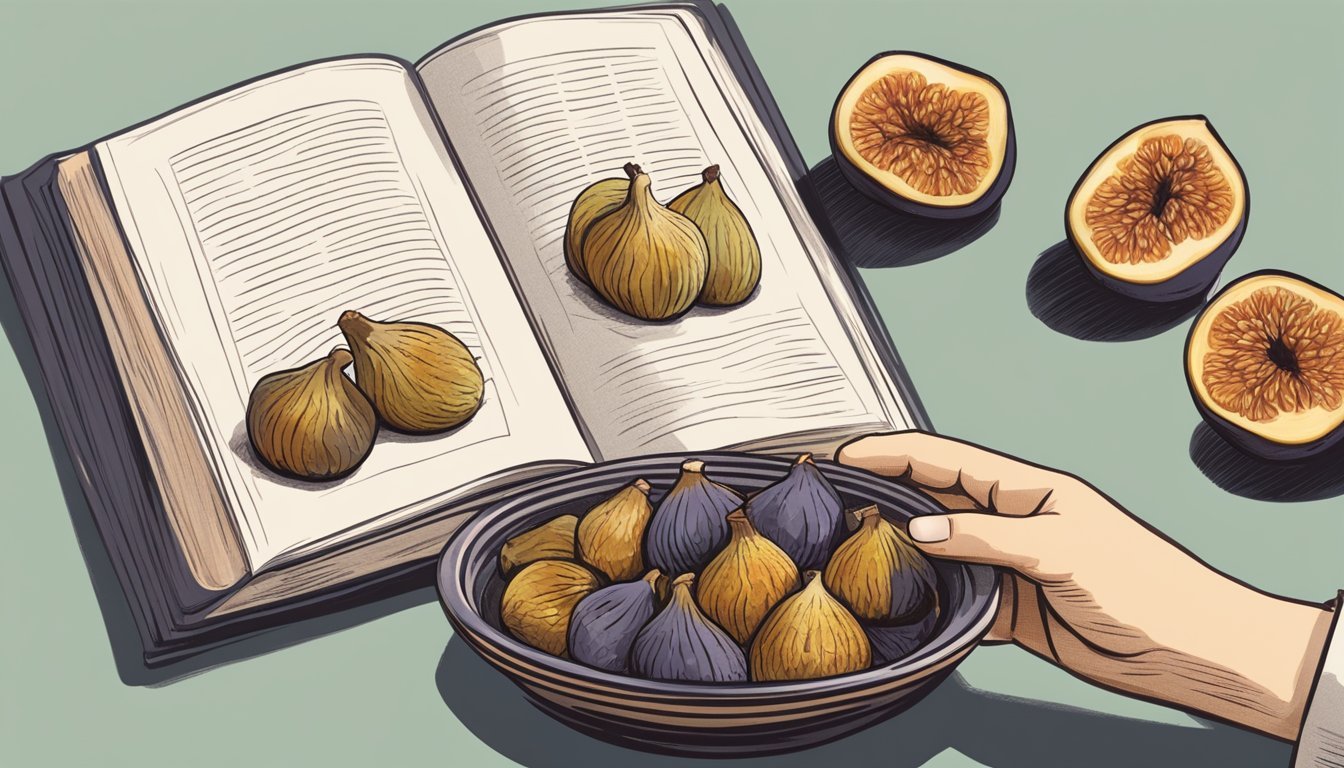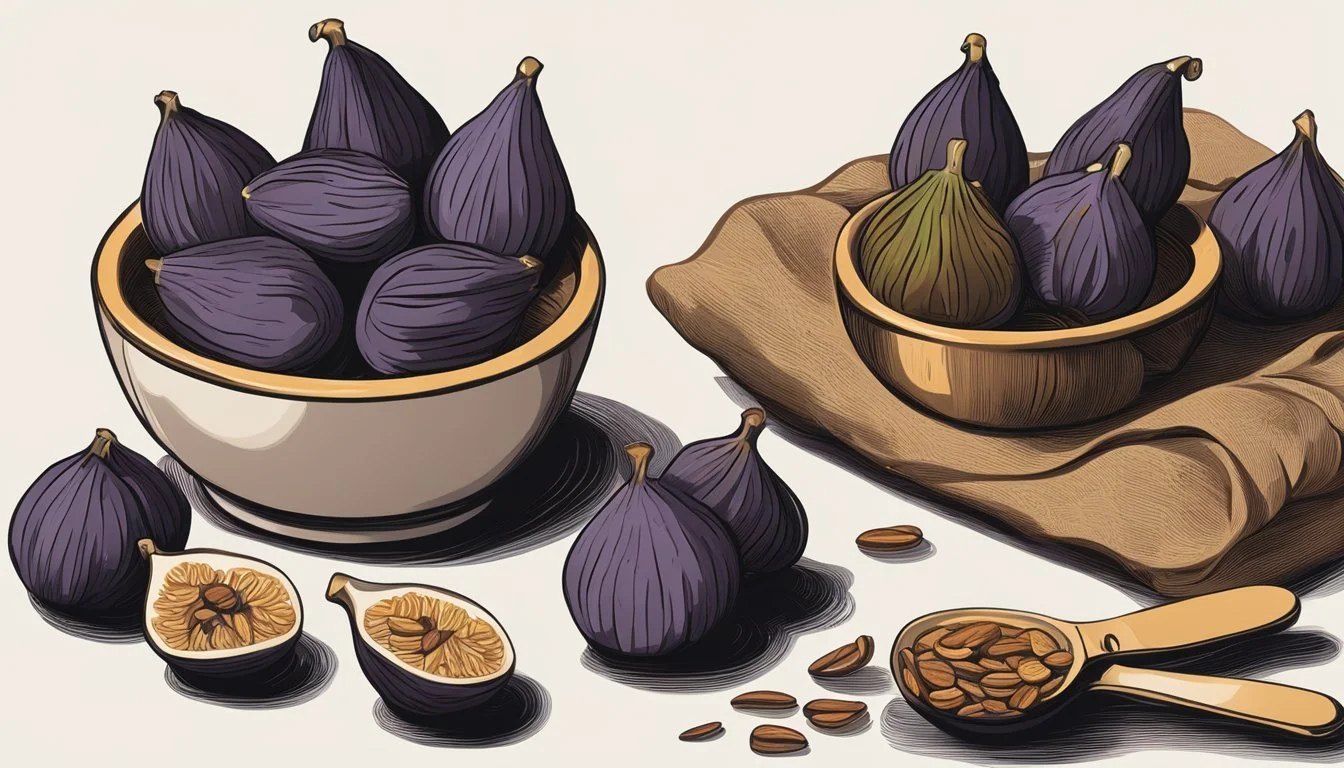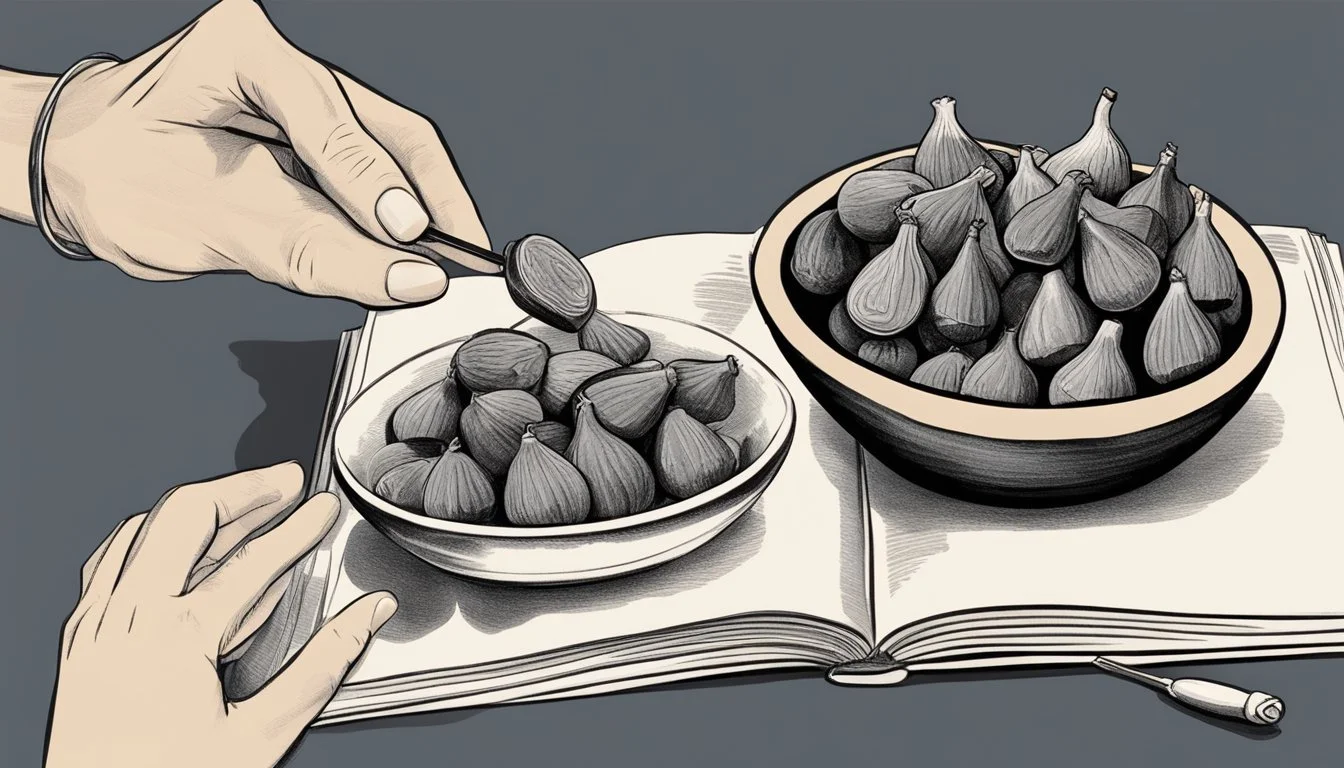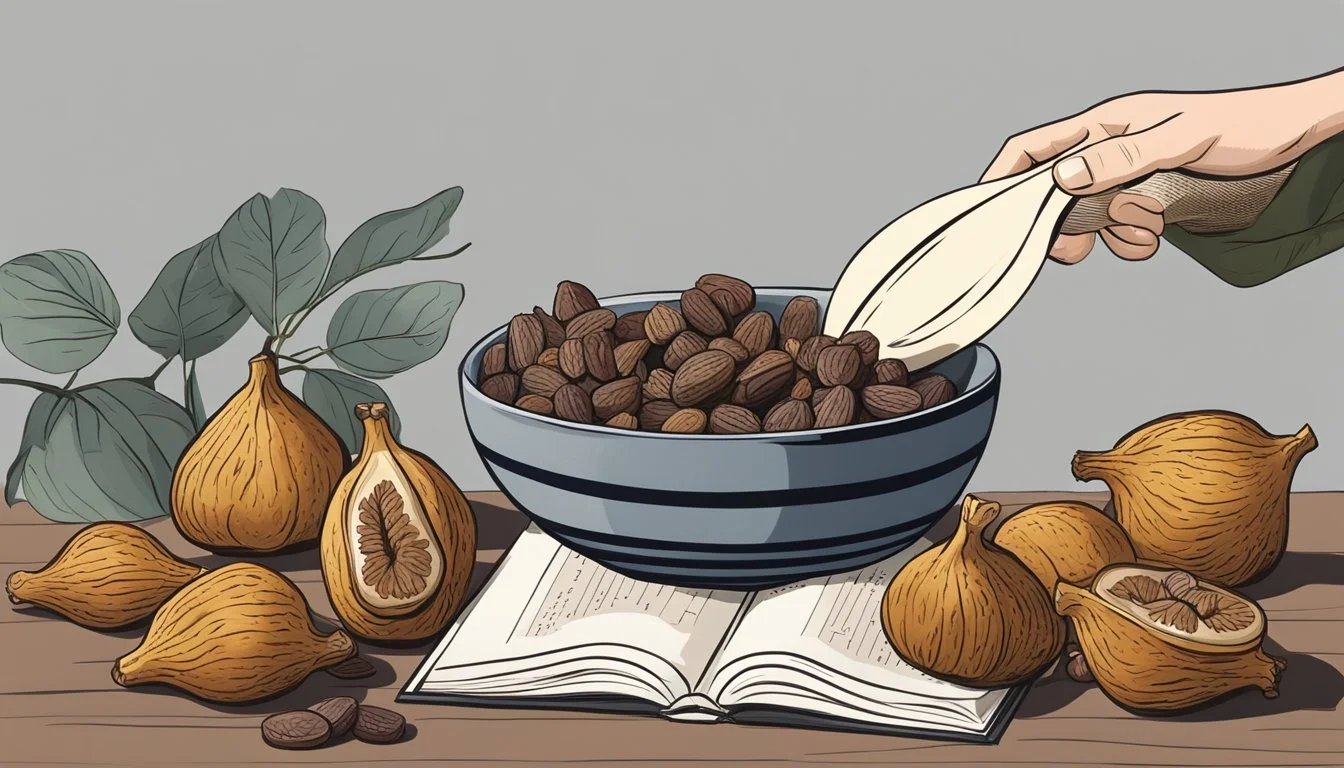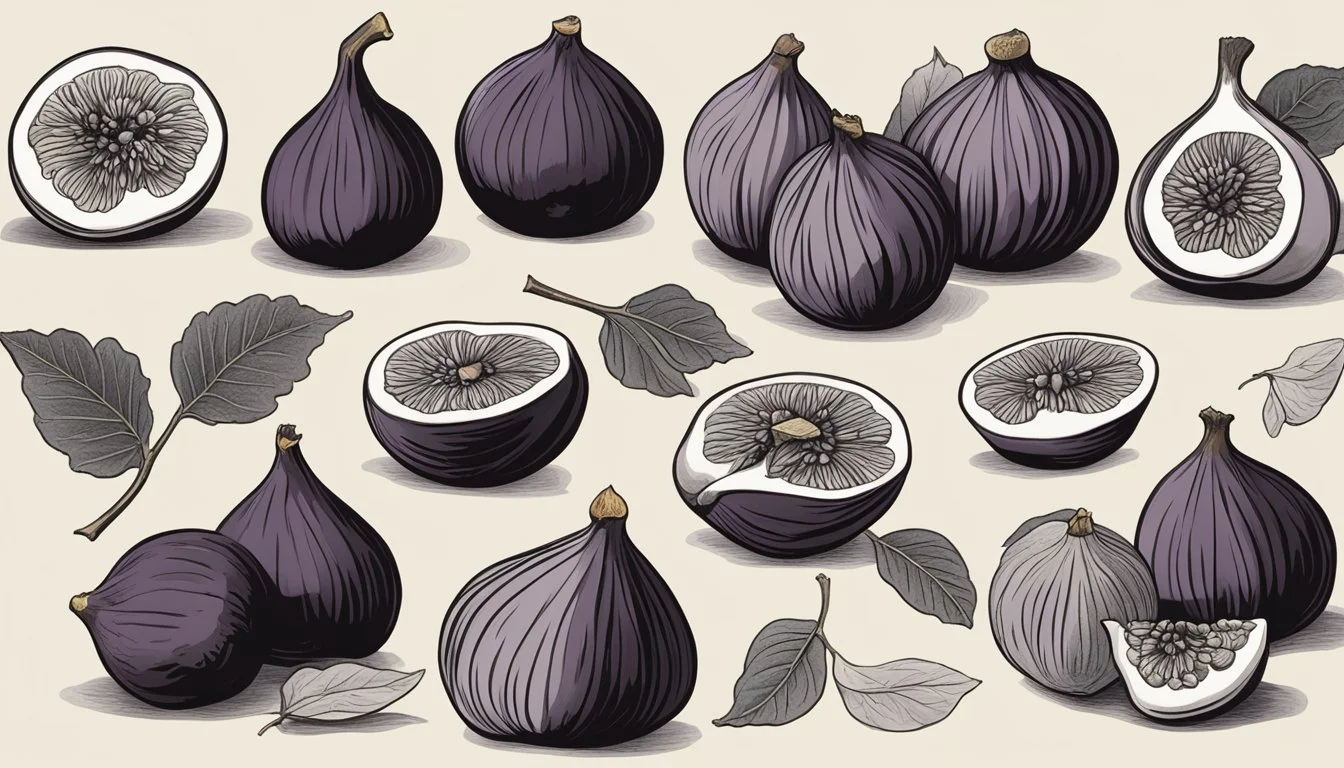How to Substitute Figs for Dates in Baking and Cooking Recipes
In the realm of sweet, chewy fruits (What wine goes well with fruits?), dates have a renowned place due to their natural sweetness and sticky texture, which lend themselves well to a variety of culinary applications, from baking to snacking. However, when dates are not available, or when a different flavor profile is desired, figs emerge as an excellent substitute. Figs offer a unique taste and similar texture that can be used in many of the same ways as dates. Whether used whole, chopped, or pureed, figs can perfectly complement and even enhance the flavor profile of recipes traditionally calling for dates.
The nutritional profiles of figs and dates show both similarities and differences, but in culinary use, they can often be interchangeable. Where dates are praised for their intense sweetness and energy-boosting carbohydrates, figs provide a subtler sweetness paired with a note of berry and nuttiness. This quality makes figs particularly adaptable for various dishes, from savory to sweet. Chefs and home cooks alike may opt for figs when looking to infuse a more nuanced sweetness into their dishes, without the overpowering sugariness that dates sometimes impart.
Understanding Figs and Dates
Before substituting figs for dates or vice versa, it's important to appreciate their nutritional variances, understand their culinary roles, and recognize common types available.
Nutritional Profiles
Figs and dates provide valuable nutrients, though their profiles differ. Figs, especially when dried, offer higher fiber content and contain vitamins such as A and B complex, minerals like calcium, iron, and potassium, as well as antioxidants. They have about 12-13 grams of sugar per 100g serving, which is significantly less than dates.
Dates, particularly Medjool dates, are richer in natural sugars, providing approximately 64 grams per 100g serving, making them a potent energy source. Dates are also a good source of fiber and contain important nutrients such as potassium and magnesium.
Nutrient Figs (per 100g) Medjool Dates (per 100g) Calories 74 (fresh), 249 (dried) 277 Fiber 2.9g (fresh), 9.8g (dried) 6.7g Sugar 16g (fresh), 48g (dried) 66g Potassium 232mg (fresh), 680mg (dried) 696mg Iron 0.37mg (fresh), 2mg (dried) 0.90mg
Culinary Uses
Figs have a unique taste and texture, often described as sweet with a slightly nutty flavor and a chewy flesh interspersed with crunchy seeds. They are versatile in both savory and sweet dishes and can be used fresh, dried, or as a preserve. In baking, figs can provide moisture and natural sweetness.
Dates, especially soft, sticky Medjool dates, are commonly used in sweet dishes and can be easily blended into a paste. This paste is a staple for sweetening and binding ingredients in a variety of recipes, such as energy bars, smoothies, and desserts.
Common Varieties
Several fig varieties are popular for their distinct characteristics:
Black Mission figs: These are known for their deep purple skin, sweet flavor, and plump shape.
Brown Turkey figs: They are slightly less sweet and are typically larger with a brownish-purple hue.
Kadota figs: Recognized by their green skin, Kadota figs have a less intense sweetness.
Dates also come in numerous varieties; however, Medjool dates stand out due to their soft texture and rich flavor, which often earns them the title "the king of dates." The versatility and natural sweetness of these dates make them particularly suitable for direct consumption and use in recipes.
Choosing Substitutes for Dates
When selecting a substitute for dates, one should consider both flavor and texture to ensure the best match for the original ingredient. Dates offer a unique caramel-like flavor and sticky texture that need to be replicated by the substitute.
Flavor Considerations
Dates possess a rich, sweet flavor with a hint of caramel which is integral to the taste profile of many recipes. For a similar flavor profile, fresh figs can be an excellent choice as they provide a comparable sweetness and a light, fruity note. Dried fruits like dried figs, prunes, and dried apricots are particularly effective because they concentrate the natural sugars, resulting in a flavor intensity akin to dates.
Fresh Figs: Can mimic the sweetness and add a softer, more nuanced taste.
Dried Figs: Concentrated sweetness, with a flavor complexity that resembles dates.
Prunes: Offer a deep sweetness and can easily be mistaken for dates in some recipes.
Textural Similarity
The texture of dates is another distinct feature that should be taken into account. Dates are chewy and moist, which allows them to add not only flavor but structure to dishes. Substitutes for dates should ideally have a similar texture to blend seamlessly into recipes.
Dried Apricots: Have a chewy texture and are sufficiently moist, much like dates.
Dried Figs: A close match in stickiness and density, making them a suitable textural alternative.
For baked goods and desserts, the stickiness of the fig substitutes will help bind ingredients together, much as dates do. Prunes, being sticky and pliable, can work well here. In instances where fresh figs are used, it should be noted that they will be softer and juicier, which may add moisture to the recipe.
Alternative Dried Fruits
Substituting figs with other dried fruits can offer diverse flavors and textures while maintaining the integrity of the dish. Here, various dried fruit options are presented as substitutes, each bringing its unique taste profile and culinary uses.
Using Dried Apricots
Dried apricots serve as an excellent substitution for figs, offering a similar chewy texture and a sweet, tangy flavor. They work well in most recipes that call for figs, including baked goods and savory dishes. Apricots can be chopped into small pieces for a direct replacement or pureed to substitute fig paste.
For snacking or as part of a charcuterie (What wine goes well with charcuterie?) board: Replace figs with equal parts of dried apricots.
In pie fillings and jams: Substitute a cup of chopped figs with a cup of finely diced dried apricots.
Utilizing Prunes and Raisins
Prunes—dried plums—have a deep sweetness and are particularly suited for recipes where a rich, caramel-like flavor is desired. They can be chopped for textural similarity to figs or stewed to create a jam-like consistency.
In cooking: A cup of chopped figs can be replaced with a cup of prunes.
Raisins, especially the golden variety, can also mimic the sweetness and texture of figs. They are well-suited for use in baked goods and can be hydrated to make them plumper for a closer fig-like consistency.
In baking: Use an equal amount of golden raisins in place of figs.
Incorporating Other Dried Fruits
There are additional dried fruits that can replace figs where their unique characteristics are desired.
Peaches: Dried peaches can bring a brighter taste to a dish making them suitable for sweet applications.
Pears: They offer a mellow sweetness and can stand in for figs particularly in cheese platters.
Pluots: A hybrid of plums and apricots, pluots combine the flavors of both fruits and work well as a fig substitute in various recipes.
Dried cranberries: For a tart kick in salads or baked goods, dried cranberries offer a vibrant contrast to the sweet flavor profile of figs.
Dried cherries: Their tartness and chewy texture make them a great fig replacement in recipes that benefit from a more assertive fruit presence.
Each alternative dried fruit should be carefully selected to complement the flavors of the recipe, ensuring a seamless substitution for figs.
Sweetness and Sugar Replacement
Replacing dates with figs in recipes is a straightforward process, especially when targeting sweetness. Figs offer a similar natural sugar content and can provide comparable sweetness in various culinary applications.
Natural Sweeteners
Figs are a powerful natural sweetener, similar to dates. They contain natural sugars that lend a satisfying sweetness to dishes, making them an excellent substitute. Additionally, figs can be used in the form of fig jam or dried figs to replace date syrup in recipes. Other natural sweeteners that pair well with figs include maple syrup and jaggery.
Quantities and Ratios
When substituting figs for dates, one should use a 1:1 ratio for simplicity and to maintain a similar sweetness profile. For instance:
1 tablespoon of date syrup can be replaced with 1 tablespoon of fig jam.
When using dried figs, remove any hard stems and chop them to the size of dates called for in the recipe.
Beyond direct substitutions, individuals can adjust to taste, as the sweetness of figs may vary depending on their variety and ripeness.
Savory Applications
In savory dishes, figs can offer a sweet balance that complements rich flavors. When substituting figs for dates, chefs highlight their ability to meld with meats and cheeses while contributing a nuanced profile to each dish.
Pairing with Meats
Figs and meats have a harmonious relationship, especially in Middle Eastern cuisine where their combination is a staple. When creating pastes for marinades, dried figs, finely chopped, can stand in for dates to coat and enhance meats such as lamb or pancetta. The figs bring a subtle sweetness and help tenderize the meat.
Lamb: For glazes or stuffings, replace dates with a 1:1 ratio of chopped figs.
Pancetta: Wrap fig slices with pancetta and roast for a sweet and savory bite.
Accompanying Cheese and Nuts
The natural sweetness of figs makes them an excellent match for cheese platters, complementing a variety of cheeses, from creamy to robust. Figs can be sliced and served with nuts like walnuts or almonds for added texture and flavor. For cheese boards, chefs often choose figs for their softer texture and nuanced sweetness.
Cheese Type Suggested Fig Pairing Creamy Brie Fresh fig slices Aged Cheddar Small diced dried figs Sharp Blue Fig paste
Figs also serve as a delicious complement to nut blends, enhancing the flavors while adding a chewy counterpoint to the crunchy nuts.
Baking and Cooking Techniques
When substituting figs for dates in recipes, chefs must consider the texture and sweetness levels, as both fruits behave differently in baking and cooking applications.
Adjustments for Baking Goods
In baking, figs can replace dates at a 1:1 ratio, but it is important to assess the moisture content of the product. Figs tend to be less moist than dates, which can affect the final texture of baked goods. If the figs are drier, bakers might need to soak them in warm water for about 10 minutes before use to help mimic the moisture content of dates. They should then be drained well to prevent excess liquid in the recipe.
For sweetness, chefs may notice that figs are slightly less sweet than dates. To compensate, an additional tablespoon of sugar or a natural sweetener for each cup of chopped figs may be needed, depending on the desired taste.
Cooking with Dried Fruit
In culinary applications, dried figs can be a direct substitution for dates in many recipes, such as jams, compotes, or sauces. Their natural sweetness and texture offer a similar mouthfeel and taste profile, but one should be cautious of their seeds, which can add a different texture than the smoothness of dates.
When cooking savory dishes or meat glazes, figs impart a rich flavor, though slightly different, but complementary, to the deep, caramel-like essence of dates.
Fresh figs: They can be used in recipes that call for fresh dates, but chefs should be aware that fresh figs are more delicate and may break down quicker when cooked.
Dried figs: They are an excellent alternative for dates in most recipes and can be chopped, pureed, or used whole, depending on the dish's requirements.
In summary, figs are a versatile and appropriate substitute for dates in both baking and culinary use, but slight adjustments may be warranted to ensure the desired outcome in terms of texture and taste.
Additional Flavor Enhancements
When substituting figs for dates, one can enhance the resulting dish by carefully selecting additional ingredients that complement the inherent sweetness and texture of the dates. These enhancements can bring out the desired flavor complexity reminiscent of figs.
Incorporating Spices
Cinnamon: A classic for fruit-based recipes; a small pinch can enhance the warmth and aromatic qualities of dates.
Amount: 1/2 teaspoon for every cup of dates
Best used in: Baked goods, compotes, and tagines
Nutmeg: Offers a nutty and slightly sweet undertone, pairing well with dates’ rich flavor.
Amount: A pinch per cup of dates
Best used in: Desserts, such as pies and custards, and savory sauces
Mixing with Other Ingredients
One should consider blending dates with other ingredients to mimic the complex flavor profile of figs better.
Apples: They add a bright acidity and texture contrast that dates sometimes lack.
Recommended Varieties: Granny Smith, Honeycrisp
Preparation: Diced or pureed
Citrus Fruits: The zest or juice can inject a tangy note that offsets the sweetness of the dates.
Options: Lemon, orange, or lime zest/juice
Ratio: Zest of 1 citrus fruit or a tablespoon of juice per cup of dates
Stone Fruits: Fruits like apricots, plums, and peaches have a similar texture to figs and can complement the dates with their tartness.
Serving Suggestion: Fresh when in season or dried if not
Preparation: Chopped or blended into dishes
Alcohol Pairings with Figs
When pairing figs with alcohol, one typically looks for beverages that complement the fruit's rich and sweet profile. Figs possess a unique flavor that is both sweet and earthy with a slightly nutty undertone. They work well with a wide variety of wines and spirits that can enhance their natural flavors.
White Wines: Lighter white wines such as Riesling or Gewürztraminer can provide a delicate balance to the sweetness of figs. These wines are known for their fruity and floral notes that don't overpower the fig flavor but rather enhance it.
Red Wines: For red wine enthusiasts, a Zinfandel might be an excellent choice. Its bold character pairs well with the robust flavors of figs, especially when the fruit is part of a savory dish.
Dessert Wines: Dessert wines like Port and Sherry are traditional favorites. They are fortified wines that have a stronger flavor and a higher alcohol content, which excels at complementing the dense and sweet nature of figs.
Flavors to Consider
When considering alcohol pairings, one should pay attention to the flavor profiles that resonate with the taste of figs:
Sweetness: To balance the natural sweetness of figs, one can choose a beverage with subtle sweet notes.
Acidity: A drink with crisp acidity can cut through the sweetness and refresh the palate.
Tannins: For a more complex pairing, tannic wines add structure and richness, enhancing the fig's flavor.
Here are some recommended alcohol pairings for various fig varieties:
Fig Variety Suggested Alcohol Pairing Black Mission Tawny Port or Merlot Brown Turkey Sherry or a rich Chardonnay Calimyrna Sparkling white wine or Champagne Kadota Late harvest Riesling or Sauternes
In summary, the best alcohol pairings for figs should highlight the fruit's natural sweetness and complexity. From the crisp whites to the robust reds and the sweet dessert wines, each pairing should respect the fig's unique flavor profile and enhance the overall tasting experience.
Regional Fig Varieties and Their Substitutes
When looking for fig substitutes, one must consider the flavor profiles of regional fig varieties, predominantly the Middle Eastern and European/North American figs, and choose the right type of dates or other fruits that complement these flavors.
Middle Eastern Flavors
In Middle Eastern cuisines, the Black Mission and Brown Turkey figs are highly esteemed for their rich sweetness. These varieties can be suitably substituted with Deglet Noor dates due to their similar honey-like taste and texture.
Black Mission Figs: Substitutes include Deglet Noor dates or dried apricots.
Brown Turkey Figs: Best replaced with Deglet Noor dates or dried figs when out of season.
European and North American Variations
The Adriatic figs, which belong to the mulberry family, are popular in European and North American regions. Their lighter, slightly nutty flavor can be replicated by using Deglet Noor dates, albeit the dates are milder in taste.
Adriatic Figs: Substitute with Deglet Noor dates, or if a tangier profile is desired, dried cranberries or raisins.
Fig Recipes: For jamming and baking, fig jam or peaches can replace Adriatic figs to retain the desired consistency and sweetness.




